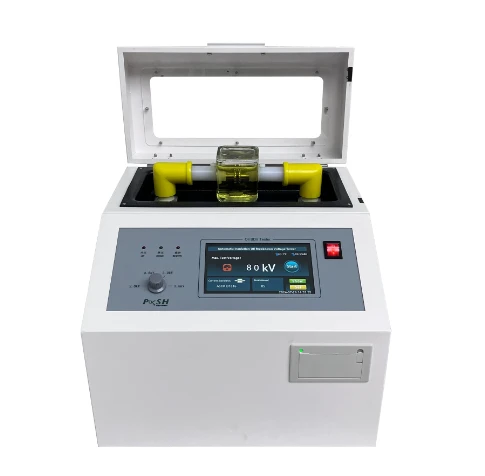TEL:
+86-0312-3189593
 English
English

Telephone:0312-3189593

Email:sales@oil-tester.com

-
 Afrikaans
Afrikaans -
 Albanian
Albanian -
 Amharic
Amharic -
 Arabic
Arabic -
 Armenian
Armenian -
 Azerbaijani
Azerbaijani -
 Basque
Basque -
 Belarusian
Belarusian -
 Bengali
Bengali -
 Bosnian
Bosnian -
 Bulgarian
Bulgarian -
 Catalan
Catalan -
 Cebuano
Cebuano -
 China
China -
 China (Taiwan)
China (Taiwan) -
 Corsican
Corsican -
 Croatian
Croatian -
 Czech
Czech -
 Danish
Danish -
 Dutch
Dutch -
 English
English -
 Esperanto
Esperanto -
 Estonian
Estonian -
 Finnish
Finnish -
 French
French -
 Frisian
Frisian -
 Galician
Galician -
 Georgian
Georgian -
 German
German -
 Greek
Greek -
 Gujarati
Gujarati -
 Haitian Creole
Haitian Creole -
 hausa
hausa -
 hawaiian
hawaiian -
 Hebrew
Hebrew -
 Hindi
Hindi -
 Miao
Miao -
 Hungarian
Hungarian -
 Icelandic
Icelandic -
 igbo
igbo -
 Indonesian
Indonesian -
 irish
irish -
 Italian
Italian -
 Japanese
Japanese -
 Javanese
Javanese -
 Kannada
Kannada -
 kazakh
kazakh -
 Khmer
Khmer -
 Rwandese
Rwandese -
 Korean
Korean -
 Kurdish
Kurdish -
 Kyrgyz
Kyrgyz -
 Lao
Lao -
 Latin
Latin -
 Latvian
Latvian -
 Lithuanian
Lithuanian -
 Luxembourgish
Luxembourgish -
 Macedonian
Macedonian -
 Malgashi
Malgashi -
 Malay
Malay -
 Malayalam
Malayalam -
 Maltese
Maltese -
 Maori
Maori -
 Marathi
Marathi -
 Mongolian
Mongolian -
 Myanmar
Myanmar -
 Nepali
Nepali -
 Norwegian
Norwegian -
 Norwegian
Norwegian -
 Occitan
Occitan -
 Pashto
Pashto -
 Persian
Persian -
 Polish
Polish -
 Portuguese
Portuguese -
 Punjabi
Punjabi -
 Romanian
Romanian -
 Russian
Russian -
 Samoan
Samoan -
 Scottish Gaelic
Scottish Gaelic -
 Serbian
Serbian -
 Sesotho
Sesotho -
 Shona
Shona -
 Sindhi
Sindhi -
 Sinhala
Sinhala -
 Slovak
Slovak -
 Slovenian
Slovenian -
 Somali
Somali -
 Spanish
Spanish -
 Sundanese
Sundanese -
 Swahili
Swahili -
 Swedish
Swedish -
 Tagalog
Tagalog -
 Tajik
Tajik -
 Tamil
Tamil -
 Tatar
Tatar -
 Telugu
Telugu -
 Thai
Thai -
 Turkish
Turkish -
 Turkmen
Turkmen -
 Ukrainian
Ukrainian -
 Urdu
Urdu -
 Uighur
Uighur -
 Uzbek
Uzbek -
 Vietnamese
Vietnamese -
 Welsh
Welsh -
 Bantu
Bantu -
 Yiddish
Yiddish -
 Yoruba
Yoruba -
 Zulu
Zulu
თებ . 16, 2025 02:50
Back to list
Transformer insulation oil breakdown voltage tester bdv
Zero sequence testing of transformers is a critical procedure in ensuring the reliability and efficiency of power distribution systems. This unique test evaluates the transformer's ability to handle zero sequence currents, typically originating from unbalanced loads or faults in the network. The zero sequence impedance measured during this test plays a vital role in the protection and fault analysis of power systems.
To execute a zero sequence test, specialized equipment is required, handled by professionals adept in transformer diagnostics. The procedure involves isolating the transformer, setting up the test apparatus to inject a balanced three-phase voltage, and measuring the resulting current through each phase. Special attention must be paid to environmental conditions during testing, as factors such as temperature and humidity can impact readings. While zero sequence testing is highly effective, it is essential for engineers to approach it with precision and care. Incorrect testing setups can result in misleading data, leading to improper analysis and decisions. Additionally, the interpretation of test results demands expertise to accurately assess the transformer's condition and necessary corrective actions. As a product, transformers designed with specific features to facilitate easier zero sequence testing are gaining popularity. Such transformers come with accessible testing points and advanced insulation mechanisms that ensure accurate impedance readings. These innovations not only enhance the reliability of the transformers but also streamline the testing process, enabling quicker and more efficient diagnostics. Zero sequence testing, therefore, stands as a testament to the blend of expertise and technological advancement in transformer maintenance. It underscores the importance of thorough testing in maintaining system reliability and efficiency. As power systems grow more complex, the role of zero sequence tests becomes increasingly crucial, ensuring that transformers are not mere components but strategic assets in power distribution networks. This underscores the essential nature of integrating advanced testing methodologies, such as zero sequence testing, in the ongoing pursuit of power system excellence.


To execute a zero sequence test, specialized equipment is required, handled by professionals adept in transformer diagnostics. The procedure involves isolating the transformer, setting up the test apparatus to inject a balanced three-phase voltage, and measuring the resulting current through each phase. Special attention must be paid to environmental conditions during testing, as factors such as temperature and humidity can impact readings. While zero sequence testing is highly effective, it is essential for engineers to approach it with precision and care. Incorrect testing setups can result in misleading data, leading to improper analysis and decisions. Additionally, the interpretation of test results demands expertise to accurately assess the transformer's condition and necessary corrective actions. As a product, transformers designed with specific features to facilitate easier zero sequence testing are gaining popularity. Such transformers come with accessible testing points and advanced insulation mechanisms that ensure accurate impedance readings. These innovations not only enhance the reliability of the transformers but also streamline the testing process, enabling quicker and more efficient diagnostics. Zero sequence testing, therefore, stands as a testament to the blend of expertise and technological advancement in transformer maintenance. It underscores the importance of thorough testing in maintaining system reliability and efficiency. As power systems grow more complex, the role of zero sequence tests becomes increasingly crucial, ensuring that transformers are not mere components but strategic assets in power distribution networks. This underscores the essential nature of integrating advanced testing methodologies, such as zero sequence testing, in the ongoing pursuit of power system excellence.
Latest news
-
Using Distillation Range Testers in the Food and Beverage IndustryNewsApr.16,2025
-
The Impact of IoT on Distillation Range Tester PerformanceNewsApr.16,2025
-
The Best Distillation Range Testers for Extreme ConditionsNewsApr.16,2025
-
How Distillation Range Testers Save Time and MoneyNewsApr.16,2025
-
Distillation Devices for Advanced Separation TechniquesNewsApr.16,2025
-
Common Mistakes to Avoid When Using a Distillation Range TesterNewsApr.16,2025



